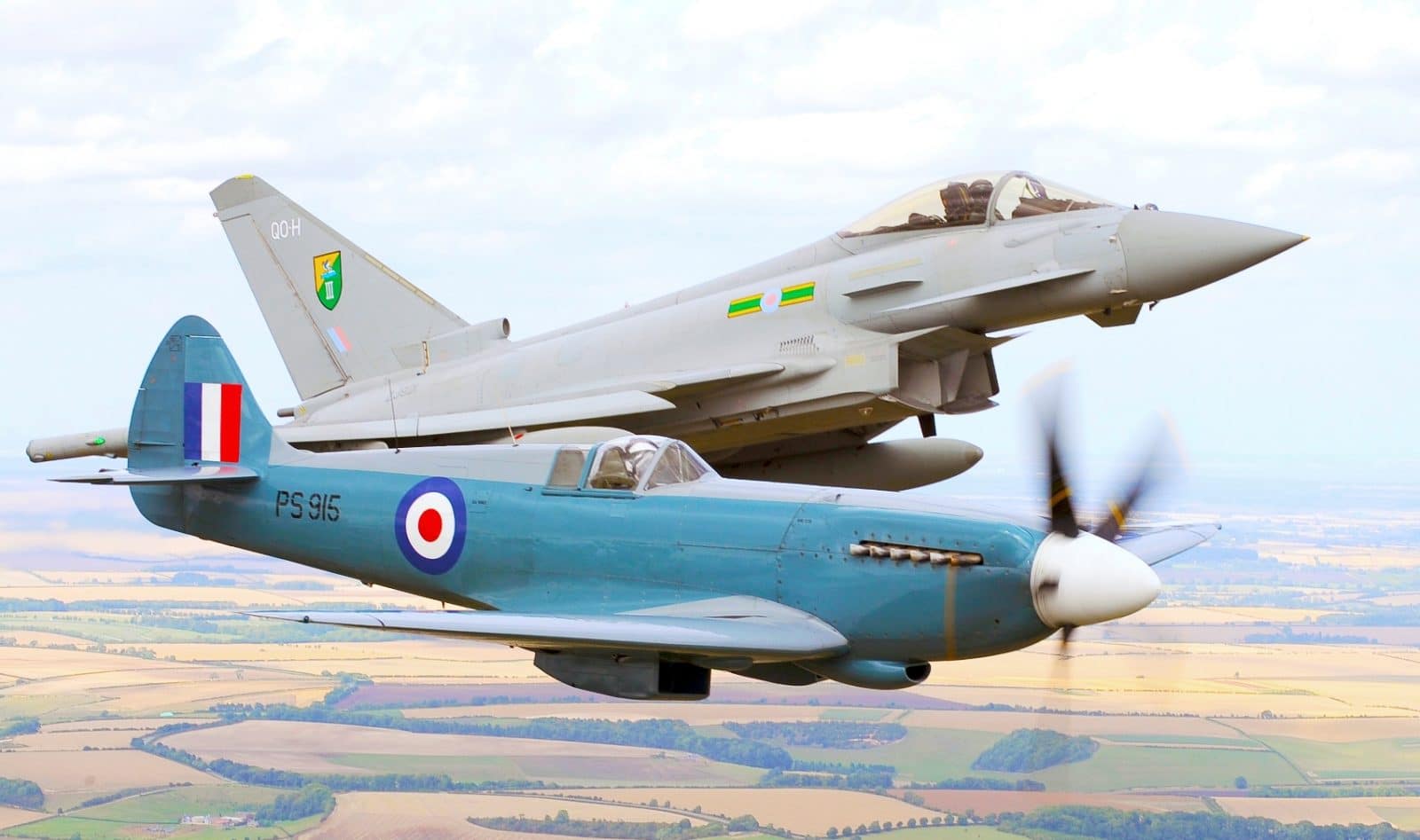Yankee Spitfires
The renowned US Army Air Corps Fourth Fighter Group was originally equipped with Supermarine Spitfires before they received their P-47 Thunderbolts in March of 1943. Several of the pilots who formed the Fourth were Americans who fought alongside the British flying Spitfires during the Battle of Britain and its aftermath as members of all-volunteer Eagle Squadrons.

Building a Better Supermarine Spitfire
Produced in 24 variants, or Marks, with additional sub-variants of many of the Marks, the Spitfire was constantly developed and improved as different and newer engine, propeller, and armament options found their way into the design. Supermarine also developed a two-seat trainer version of the Spitfire after the war concluded.

Spitfires at Sea
No discussion of the Supermarine Spitfire would be complete without including mention of the Seafire. Even though the Royal Navy Fleet Air Arm utilized several American carrier fighter aircraft, Supermarine was convinced that the performance of the Spitfire alone made it an aircraft that belonged aboard Royal Navy aircraft carriers. The modifications required to operate Spitfires from carriers seemed minimal- at least at first.

Not Built for Carrier Duty
The limitations of the basic Spitfire design, such as lack of visibility over the nose of the aircraft on approach and on the ground (or deck) along with the narrow landing gear track, really made the Seafire impractical for carrier operations. The Spitfire was also not designed for the repeated punishment that carrier-based aircraft must endure.
Later Seafire Marks improved the breed much like the later Spitfire Marks, but even though the Seafire operated with the Fleet Air Arm from 1942 through the mid-1950s, it never really overcame its limitations and was replaced in most cases by the aforementioned American-manufactured carrier fighters and eventually the Hawker Sea Fury.

The Last of Their Kind
The last Spitfire Mark, the Mark 24, took to the air for the first time on April 13th 1946. Nearly 12 years after the first flight of the Spitfire prototype, on February 20th 1948, the last production Mark 24 Spitfire (VN496), and the last of the 20,349 Spitfires built (all Marks), rolled off the production line. The last operational Spitfire sortie was flown on April 1st 1954. Fittingly, the very last flight of a piston engine RAF fighter was also a Spitfire flight, which took place on June 9th 1957.

Flying for Foreign Flags
In addition to the Royal Air Force and Royal Navy Fleet Air Arm, Spitfires and Seafires were operated by Argentina (two used for testing), Australia, Belgium, Burma, Canada, China (Taiwan), Czechoslovakia, Denmark, Egypt, France, Free France, Greece, Hong Kong, British Raj, India Union of India, Indonesia, Ireland, Israel, Italy, The Netherlands, New Zealand, Norway, Pakistan, Poland, Portugal, Rhodesia, South Africa, Soviet Union, Sweden, Syria, Thailand, Turkey, United States, and Yugoslavia.

The Unforgettable Spitfire Experience
There are roughly 55 operational Spitfires at any given time in the world today and many more are on static display in museums on every continent. Nothing looks or sounds quite the same as a Spitfire flying past. Have a look and listen.
